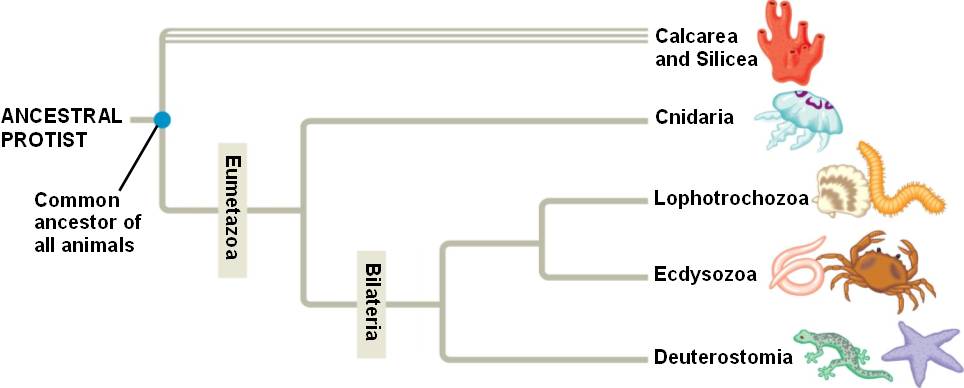

Because genes control development, we can determine phylogenetic relationships by looking at developmental patterns. Review: Hans Spemann and Hilde Mangold determined that during gastrulation the cells at the dorsal lip of the blastopore are the primary inducers of cell differentiation. The name deuterostome translates as “second mouth.” In a deuterostome, the blastopore forms the anus and the mouth forms subsequently at the other end. The blastopore, first opening, of a protostome forms the mouth, and the anus forms subsequently at the other end. Early in embryonic development the opening called the blastopore forms. The word protostome literally translates as “first mouth”. The process is called enterocoelus development. In deuterostomes, the coelom is formed by an evagination of the archenteron, the primitive gut. In protostomes, the coelom forms by schizocoelousĭevelopment, so-named because the coelom forms from the splitting of cells in the mesoderm.

Review: In all coelomates, the coelom originates from In deuterostomes, the cells are indeterminate, meaning that the cells of the embryo are identical and any single cell has the potential of developing into a complete organism. In protostomes, cells are determinate, meaning that their developmental fate is fixed. Previously known as Zygoneura, the group was named Protostomia based on the fate of the blastopore, which should develop into the mouth (rather than the anus. In deuterostomes, cells form at right angles to the polarĪxis, a pattern called radial cleavage because the cells form a radius outward from the polar axis. The pattern is referred to as spiral cleavage since the dividing cells spiral outward from the polar axis. In protostomes, each new cell forms at an angle that is oblique to the polar axis. The cleavage pattern is indicated by the position of the cells relative to the embryo’s polar axis. During embryonic development cells continually divide, a process called cleavage. Deuterostomes include the echinoderms, chordates, and several other lesser-known phyla. Protostomes include molluscs, annelids, and arthropods. The groupings are based on fundamental differences that occur during development. The phylogenetic tree on the left depicts the fact that the coelomates are taxonomically grouped into protostomes and deuterostomes. All rights reserved.- Review: As a group, the coelomates have a body cavity lined on both sides with tissue derived from the mesoderm. These results are more compatible with a deuterostomic rather than protostomic (blastopore forms the mouth) or amphistomic (mouth and anus are formed simultaneously) mode of development in the last common bilaterian ancestor.Ĭopyright © 2012 Elsevier Ltd. caudatus follows strictly a deuterostomic pattern.

Thereby, gastrulation in the conservatively evolving protostome P. We show that the blastopore gives rise to the anus at the vegetal pole and that the hindgut markers brachyury and caudal are expressed in the blastopore and anus, whereas the foregut markers foxA and goosecoid are expressed in the mouth in the animal hemisphere. Here, we characterize gastrulation and the embryonic expression of genes involved in bilaterian foregut and hindgut patterning in Priapulus caudatus. Priapulids have a conservative morphology, an abundant Cambrian fossil record, and a phylogenetic position that make them a key group in understanding protostome evolution. The blastopore fate of the bilaterian ancestor plays a crucial role in understanding the transition from radial to bilateral symmetric organisms. This variability, combined with an absence of information from key taxa, hampers the reconstruction of the ancestral developmental mode of the Protostomia and the Bilateria. In deuterostomes, the blastopore forms the anus, but its fate in protostome groups is variable. The fate of the blastopore during development in the bilaterian ancestor is currently not well understood.


 0 kommentar(er)
0 kommentar(er)
